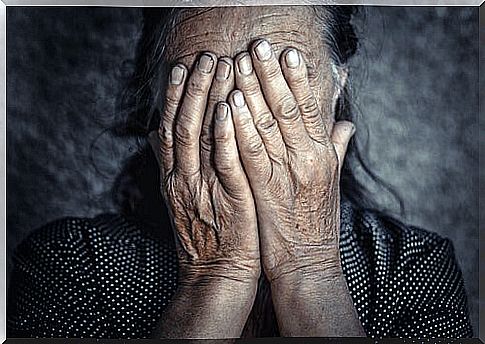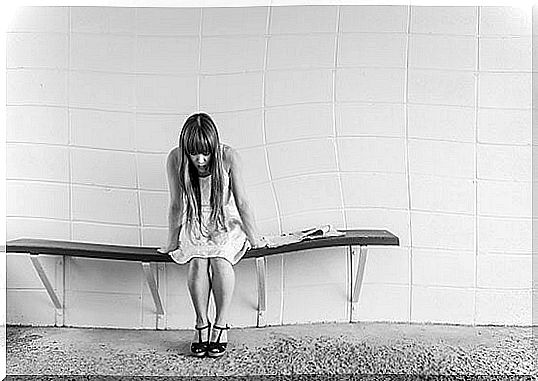What Is The Relationship Between Negative Emotions And Chronic Pain?

It seems difficult not to relate the pain to feeling bad on an emotional level, right? Who has not happened to hit the knee and got “pissed off” at the table for being in the middle? Apart from anger, we can also feel sad or anxious.
Now imagine that this pain is not temporary, but is there most of the time … It is not difficult to assume the associated emotional discomfort, right? The fact is that there are numerous studies on the influence of psychological factors on chronic pain. So … is emotional distress caused by chronic pain or is it the other way around?
Chronic pain and sadness
The fact is that, although we know that chronic pain and negative emotions are linked, it is complex to delimit in a concrete way what this relationship is. We do not know exactly how emotions influence the appearance or increase of pain, in the same way that we do not know the role that pain plays in our feeling negative emotions.
On the other hand, chronic pain carries high levels of disability. Thus, those who suffer from it, see their lives very affected. This is also related to the emotional discomfort that usually appears in these people. In fact, this loss of functional capacity can lead to high levels of sadness.
Indeed, it has been found that the incidence of depression is higher in patients with chronic pain compared to the general population without. But not only that, sadness also predicts increases in pain. Specifically, this emotion has been shown to be the strongest predictor of pain in rheumatoid arthritis.

Anxiety and chronic pain
Chronic pain is not only associated with sadness or depression. It is also related to anxiety and anger. Regarding anxiety, it has been seen that people with chronic pain are more anxious. Furthermore, the prevalence of anxiety disorders is higher in this population than in those without pain.
As with sadness, anxiety has been found to influence the experience of chronic pain. Specifically, high levels of anxiety maintained over time predispose to frequent episodes of pain. But … not only that, they also make the pain that was already there worse. Thus, the pain is more pronounced and sustained in patients with higher levels of anxiety.
Sensitivity to anxiety also plays a role. This is the fear of anxiety symptoms, associated with the belief that they will have harmful consequences for us. This factor influences both the onset and maintenance of chronic pain.
Chronic pain and anger
The role of the emotion of anger in physical health has already been studied numerous times. In fact, evidence has been found that their experience and expression contribute to the initiation and evolution of various psychosomatic illnesses, such as heart disease or cancer.
Regarding chronic pain, the results indicate that people who suffer from it show higher levels of anger and hostility than the general population. It has also been seen that the internal expression of anger is higher than in other people. This means that they experience anger that they do not express to the outside, but are manifested in their internal dialogue through negative thoughts that they do not stop thinking about.
In addition, it has been seen that patients with chronic pain who tend to express their anger in this way, rather than outward (external anger) or handling it more appropriately (anger management), have higher levels of pain. But it is also harmful to express anger outwardly, since those who do so will see their interpersonal relationships affected and their social support will be diminished, which is key.
Therefore, it is extremely relevant to intervene from the psychological level in patients with chronic pain. Proper anger management, as well as anxiety and sadness management strategies will not only promote greater psychological well-being, but will also help reduce the experience of pain.
Images courtesy of Cristian Newman and Ryan McGuire.









